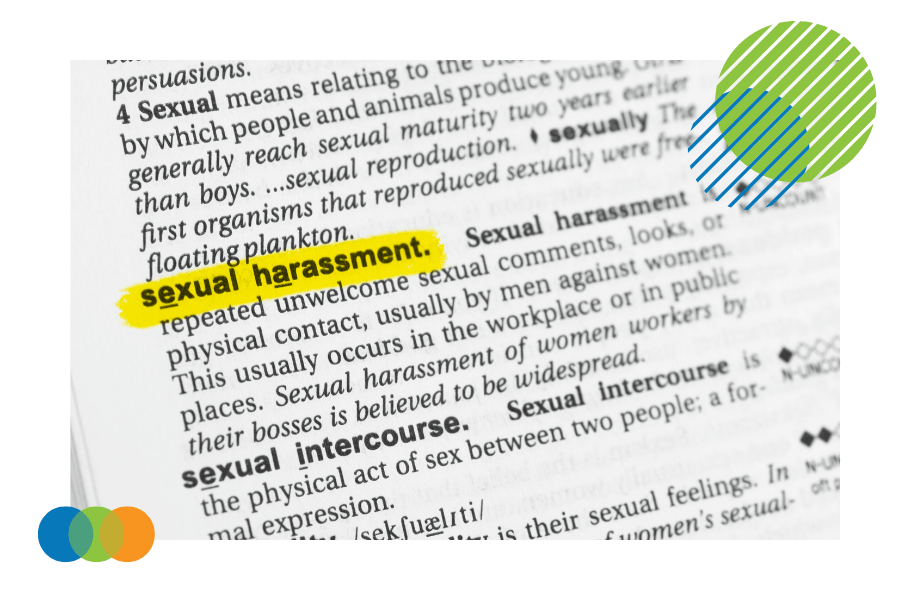 |
Written by Liz McDermott |

In today's society, discussions around sexual harassment have become increasingly important. One particular type of workplace harassment that often makes headlines is quid pro quo harassment. But what exactly does this term mean?
This article will explore the definition, examples, and legal implications of quid pro quo sexual harassment.

The Importance of Increasing Awareness of Quid Pro Quo Harassment
Understanding the dynamics of quid pro quo harassment is essential for raising awareness and protecting individuals in the workplace. By recognizing the signs, advocating for victims, and understanding the legal recourse available, we can create a safer and more equitable working environment for all. So, join us as we explore this critical topic and shed light on the damaging effects of quid pro quo sexual harassment.
What Is Quid Pro Quo Harassment?
Quid pro quo sexual harassment is a term used to describe a specific form of harassment in the workplace where a person in a position of power demands sexual favors from a subordinate in exchange for employment benefits or protection from adverse actions. Derived from Latin, "quid pro quo" means "something for something." In the context of sexual harassment, it refers to situations with an explicit or implicit expectation of sexual compliance in return for workplace advantages.
What is the origin of the phrase quid pro quo?
The phrase "quid pro quo" has its roots in Roman law and has been used in various contexts throughout history. In legal terms, it refers to exchanging goods or services of equal value. However, when it comes to sexual harassment, the phrase takes on a more sinister meaning. It pertains to the abuse of power dynamics in the workplace, where someone uses their authority to coerce or manipulate another person into engaging in sexual activity.
What does quid pro quo mean in Latin?
In Latin, "quid pro quo" translates directly to "something for something." This phrase encapsulates the essence of quid pro quo sexual harassment, where an individual seeks sexual favors in exchange for workplace benefits or protection. It highlights the transactional nature of this harassment, where the harasser expects a quid pro quo arrangement to be maintained for the victim to enjoy certain privileges or avoid negative consequences.

Examples of Diverse Perspectives and Uses of The Phrase
The phrase "quid pro quo" is not limited to sexual harassment. It has been widely used in various contexts to signify an exchange or reciprocal relationship. For example, in international diplomacy, quid pro quo may refer to the negotiation of agreements between countries, where one party offers certain concessions in return for specific actions or benefits from the other party.
Quid Pro Quo Harassment in Business
Quid pro quo often appears in negotiations and contracts, where two parties agree to exchange goods, services, or money. This could involve a company offering a product discount in return for a client signing a long-term contract. Quid pro quo is commonly seen as a fair and mutually beneficial arrangement in these scenarios.
However, when it comes to sexual harassment, the concept of quid pro quo takes on a much darker meaning. It involves an abuse of power dynamics and can have severe consequences for the victim. It is crucial to distinguish between consensual relationships and situations with an imbalance of power and a clear expectation of sexual compliance.

Unwelcome Sexual Advances vs. Sexual Favors
To understand quid pro quo sexual harassment, it is essential to differentiate between unwelcome sexual advances and sexual favors. It is important to note that both are forms of sexual harassment and are prohibited by law. However, quid pro quo sexual harassment carries additional legal implications due to the explicit exchange of sexual acts for employment benefits or protection.
Unwanted Sexual Advances
Unwelcome sexual advances refer to unwanted sexual behavior or comments that create a hostile work environment. These advances can range from inappropriate jokes or comments to unwanted physical contact.
Sexual Favor
On the other hand, sexual favors are requests or demands for sexual activity in exchange for workplace benefits or protection. This could include requests for sexual acts, dates, or even threats of job loss if the victim refuses to comply. The critical distinction is that favors involve an explicit or implicit expectation of sexual compliance in return for workplace advantages.

Can I File a Quid Pro Quo Sexual Harassment Claim?
Suppose you believe you have experienced quid pro quo sexual harassment in the workplace. In that case, it's essential to understand your rights covered by the Equal Employment Opportunity Commission and the legal options. You have the right to file a sexual harassment claim and seek justice for the harm you have endured.
Consulting with a sexual harassment attorney or seeking guidance from your local labor board would be best for you to fully understand the legal process and the specific requirements for filing a claim in your jurisdiction.
When filing a quid pro quo sexual harassment claim, gathering evidence to support your case is crucial. This may include emails, text messages, witness testimonies, or any other documentation that can substantiate your allegations. It is essential to document incidents promptly and record all relevant communication and interactions related to the harassment.
It is also important to understand that retaliation is illegal. If you file a sexual harassment claim, your employer is prohibited from taking adverse actions against you in response to your complaint. If you experience any form of retaliation, it is essential to document these incidents and report them to the appropriate authorities.

Elements of a Quid Pro Quo Harassment Claim
To establish a quid pro quo sexual harassment claim, certain elements need to be present. These elements may vary depending on the jurisdiction but generally include the following:
- Existence of a quid pro quo exchange:
There must be evidence of a direct or implied promise of employment benefits or protection in exchange for sexual favors. - Proof of unwelcome sexual advances or requests:
The victim must demonstrate that the sexual advance or request was undesirable and that they created a hostile work environment. - Power imbalance:
The alleged harasser's conduct must occupy a position of power or authority over the victim, such as a supervisor, manager, or employer. - Causation:
The victim must show that sexual harassment was a substantial factor in adverse employment actions, such as demotion, termination, or loss of job-related benefits.
Meeting these elements can strengthen your quid pro quo sexual harassment claim and increase the likelihood of obtaining a favorable outcome in legal proceedings. However, consulting with an employment law attorney to help you through your jurisdiction's specific requirements and legal processes is essential.
Business Examples of Quid Pro Quo Sexual Harassment
Quid pro quo sexual harassment can occur in various professional settings, and it is vital to be aware of the potential signs and implications. Here are some examples of quid pro quo sexual harassment in the workplace:
- Supervisor demanding sexual favors:
A supervisor may offer a promotion or pay raise in exchange for sexual acts or a romantic relationship. This creates an explicit quid pro quo arrangement where the victim feels compelled to comply to secure or maintain employment benefits. - Employer threatening job loss:
An employer might make explicit or implicit threats of job loss or demotion if the victim refuses to engage in sexual activity. This coercive behavior places the victim vulnerable and can have severe emotional and professional consequences.> - Manager offering preferential treatment:
A manager may promise favorable assignments, promotions, or preferential treatment in exchange for sexual favors. This abuse of power creates an unfair advantage for the harasser and can significantly impact the victim's career progression.
These examples illustrate the power dynamics involved in quid pro quo sexual harassment and highlight the importance of creating safe and respectful working environments. By raising awareness, implementing robust anti-harassment policies, and providing comprehensive sexual harassment and discrimination prevention training, businesses can work towards preventing these incidents and supporting victims who come forward.
Conclusion: Training Helps Prevent Quid Pro Quo Sexual Harassment Incidents
Quid pro quo sexual harassment is a serious issue that can have far-reaching consequences for individuals and organizations. It is essential to understand the dynamics of this form of harassment, recognize the signs, and take proactive measures to prevent it in the workplace.
Sexual harassment and discrimination prevention training is crucial in raising awareness and educating employees about their rights and responsibilities. By providing comprehensive training on sexual harassment prevention, businesses can empower their workforce to recognize and report instances of quid pro quo sexual harassment.
Additionally, training can help foster a culture of respect and inclusion, where inappropriate behavior is not tolerated and victims feel supported.
Ultimately, the fight against quid pro quo sexual harassment requires collective effort. By advocating for victims, holding perpetrators accountable, and creating safe and equitable working environments, we can work towards eradicating this form of harassment and creating a more just society for all. Our responsibility is to champion change and ensure that no one has to endure the damaging effects of quid pro quo sexual harassment.
For more information, please contact us to inquire about our Sexual Harassment and Discrimination Prevention training.

